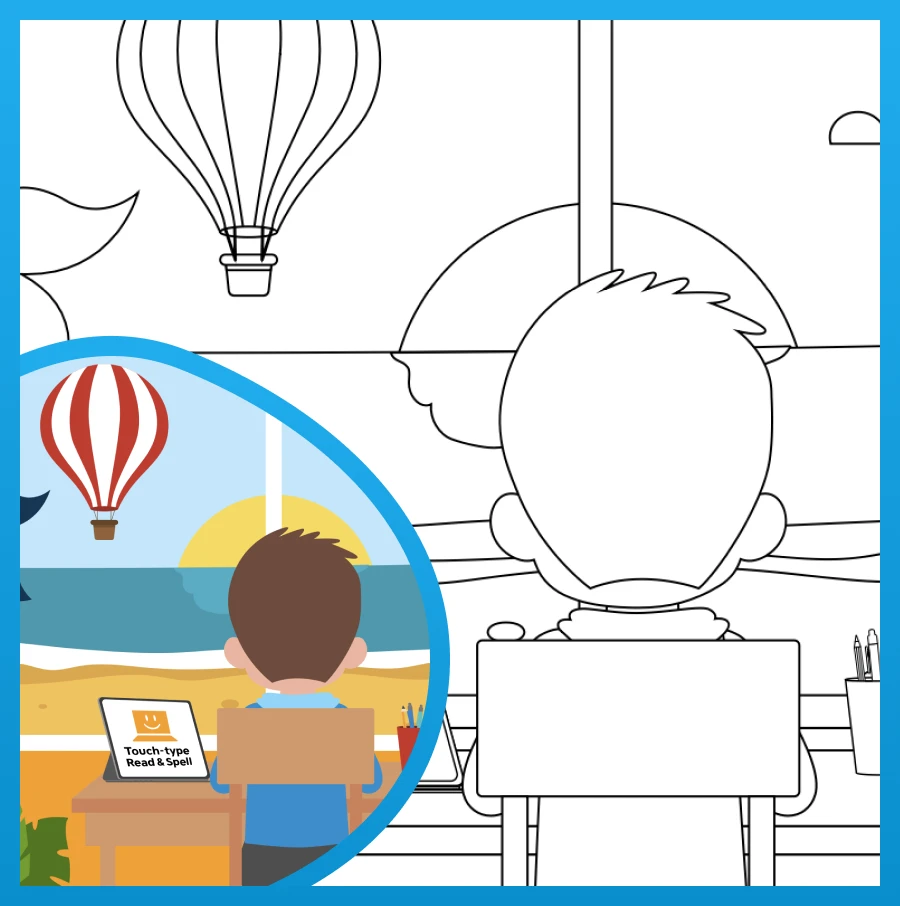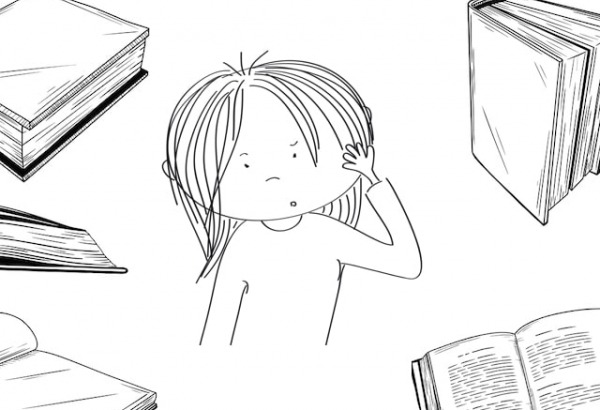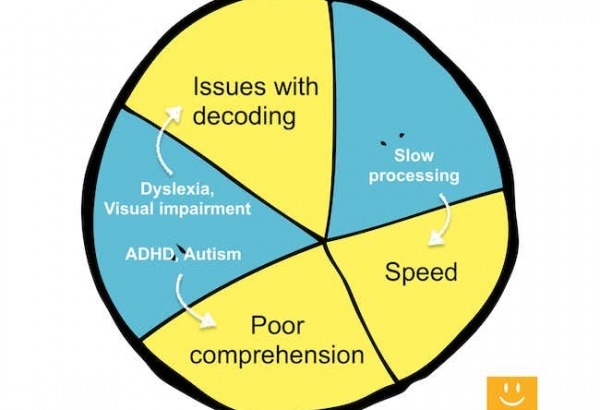3 Methods for teaching reading
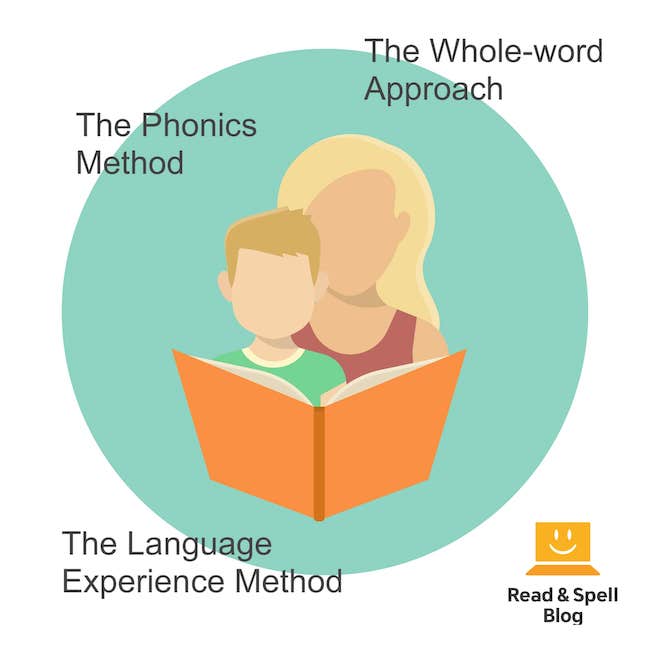
Learning how to read is one of the most important things a child will do before the age of 10. That’s because everything from vocabulary growth to performance across all major subjects at school is linked to reading ability. The Phonics Method teaches children to pair sounds with letters and blend them together to master the skill of decoding.
The Whole-word Approach teaches kids to read by sight and relies upon memorization via repeat exposure to the written form of a word paired with an image and an audio. The goal of the Language Experience Method is to teach children to read words that are meaningful to them. Vocabulary can then be combined to create stories that the child relates to. Yet while there are various approaches to reading instruction, some work better than others for children who struggle with learning and attention difficulties.
Dyslexia can cause individuals to have trouble hearing the sounds that make up words. This makes it difficult for them to sound out words in reading and to spell correctly. Dyslexic learners may therefore benefit from a method that teaches whole-word reading and deemphasizes the decoding process.
Orton-Gillingham is a multi-sensory approach that has been particularly effective for dyslexic children. It combines visual, auditory, kinesthetic, and tactile learning to teach a program of English phonics, allowing children to proceed at a pace that suits them and their ability.
No two students will learn to read in exactly the same way, thus remaining flexible in your approach is key. It can be useful to combine methods, teach strategies and provide the right classroom accommodations, particularly for students who have specific learning differences. Remember that motivation is key and try to be patient so as to avoid introducing any negative associations with school and learning.
Learn more about motivating children to read, different kinds of dyslexia, identifying dyslexia, the Orton-Gillingham approach to reading, and strategies to help children with dyslexia.
Pre-literacy skills
Children begin acquiring the skills they need to master reading from the moment they are born. In fact, an infant as young as six months old can already distinguish between the sounds of his or her mother tongue and a foreign language and by the age of 2 has mastered enough native phonemes to regularly produce 50+ words. Between the ages of 2-3 many children learn to recognize a handful of letters.
They may enjoy singing the alphabet song and reciting nursery rhymes, which helps them develop an awareness of the different sounds that make-up English words. As fine motor skills advance, so does the ability to write, draw and copy shapes, which eventually can be combined to form letters.
There are plenty of ways parents can encourage pre-literacy skills in children, including pointing out letters, providing ample opportunities for playing with language, and fostering an interest in books. It can be helpful to ask a child about their day and talk through routines to assist with the development of narrative skills.
Visit your local library and bookstore as often as possible. The more kids read with their parents, teachers and caregivers, the more books become a familiar and favorite pastime. Young children should be encouraged to participate in reading by identifying the pictures they recognize and turning the pages.
Discover more about fostering pre-literacy skills.

1. The Phonics Method
The smallest word-part that carries meaning is a phoneme. While we typically think of letters as the building blocks of language, phonemes are the basic units of spoken language. In an alphabetic language like English, sounds are translated into letters and letter combinations in order to represent words on the page. Reading thus relies on an individual’s ability to decode words into a series of sounds. Encoding is the opposite process and is how we spell.
The Phonics Method is concerned with helping a child learn how to break words down into sounds, translate sounds into letters and combine letters to form new words. Phonemes and their corresponding letters may be taught based on their frequency in English words. Overall there are 40 English phonemes to master and different programs take different approaches to teaching them. Some materials introduce word families with rhyming words grouped together. It’s also possible to teach similarly shaped letters or similar sounding letters together.
The Phonics Method is one of the most popular and commonly used methods. In the beginning progress may be slow and reading out loud halting, but eventually the cognitive processes involved in translating between letters and sounds are automatized and become more fluent. However, English is not always spelled the way it sounds. This means some words can’t be sounded out and need to be learned through memorization.
2. The Whole-word Approach
This method teaches reading at the word level. Because it skips the decoding process, students are not sounding out words but rather learning to say the word by recognizing its written form. Context is important and providing images can help. Familiar words may initially be presented on their own, then in short sentences and eventually in longer sentences. As their vocabulary grows, children begin to extract rules and patterns that they can use to read new words.
Reading via this method is an automatic process and is sometimes called sight-reading. After many exposures to a word children will sight-read the majority of the vocabulary they encounter, only sounding out unfamiliar terms.
Sight-reading is faster and facilitates reading comprehension because it frees up cognitive attention for processing new words. That’s why it is often recommended that children learn to read high frequency English vocabulary in this way. The Dolch word list is a set of terms that make-up 50-75% of the vocabulary in English children’s books.
Learn more about teaching sight-reading and the Dolch List.
3. The Language Experience Method
Learning to read nonsense words in a black-and-white activity book is not always the most effective approach. The Language Experience Method of teaching reading is grounded in personalized learning where the words taught are different for every child. The idea is that learning words that the child is already familiar with will be easier.
Teachers and parents can then create unique stories that use a child’s preferred words in different configurations. Children can draw pictures that go with them and put them together in a folder to create a special reading book. You can look for these words in regular children’s fiction and use them to guess at the meaning of unknown words met in a context – an important comprehension strategy that will serve kids in later grades.
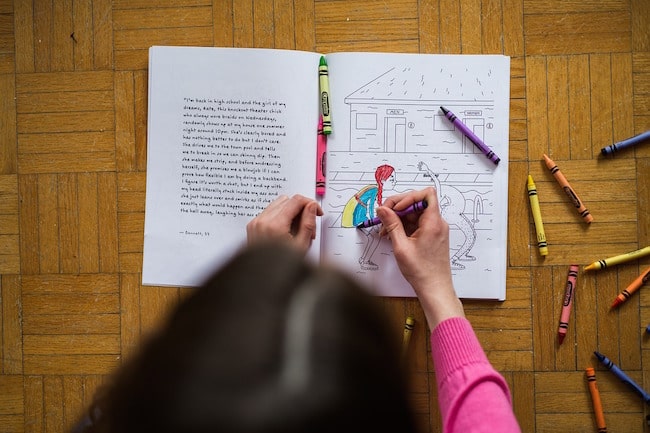
8 Tips for parents
No matter which method or methods you use, keep these tips in mind:
-
Read as often as possible. Develop a routine where you read a book together in the morning or in the evening. You may start by reading aloud but have the child participate by running a finger along the text. Make reading fun, include older children and reserve some family reading time where everyone sits together with their own book to read for half an hour—adults included!
-
Begin with reading material that the child is interested in. If he or she has a favorite subject, find a book full of related vocabulary to boost motivation.
-
Let the child choose his or her own book. When an individual has agency and can determine how the learning process goes, he or she is more likely to participate. Take children to libraries or bookstores and encourage them to explore books and decide what they would like to read.
-
Consider graded readers. As a child develops his or her reading ability, you will want to increase the challenge of books moving from materials that present one word per page to longer and longer sentences, and eventually, paragraph level text. If you’re not sure a book is at the right level for your child, try counting how many unfamiliar words it contains per page. You can also take the opposite approach and check to see how many Dolch words are present.
-
Talk about what you see on the page. Use books as a way to spur conversation around a topic and boost vocabulary by learning to read words that are pictured but not written. You can keep a special journal where you keep a record of the new words. They will be easier to remember because they are connected through the story.
-
Avoid comparisons with peers. Every child learns to read at his or her own pace. Reading is a personal and individual experience where a child makes meaning and learns more about how narrative works as he or she develops stronger skills.
-
Don’t put too much pressure. Forcing a child into reading when he or she is not ready can result in negative reactions and cause more harm than good.
-
Do speak with your child’s teacher. If your child doesn’t enjoy reading and struggles with decoding and/or sight reading, it may be due to a specific learning difficulty. It’s advised you first discuss it with your child’s teacher who may recommend an assessment by a specialist.
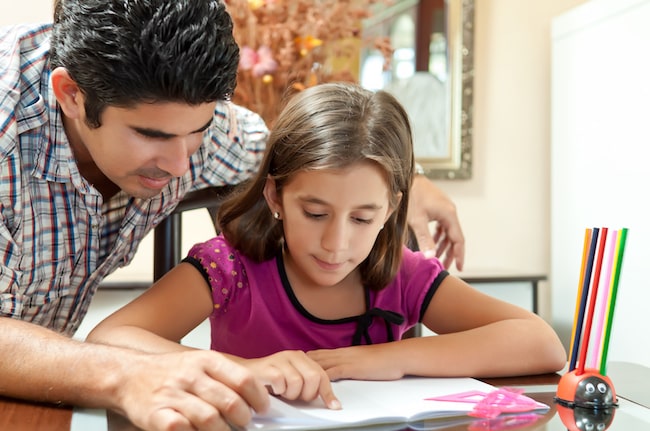
Learning and attention difficulties
If reading is particularly challenging and your child isn’t making progress there could be a specific learning difficulty such as dyslexia, or an attention disorder like ADHD, that is causing the problem. Dyslexia is hereditary and it’s not unlikely that another family member will also have a hard time with reading. Visual processing, visual impairment and hearing impairment can also cause reading difficulties.
In the case of the latter, if you can’t hear the words it’s hard to identify the sounds inside them and develop an understanding of phonics. Hearing impairment based reading difficulties are a common issue in teaching children with Down syndrome to read.
Orton-Gillingham
Orton-Gillingham is an approach designed to help struggling readers. It’s based on the work of Dr. Samuel Orton and Dr. Anna Gillingham and has been in use for the past 80+ years. Orton-Gillingham allows every child to proceed at a pace that is right for him or her and introduces English phonics in a multi-sensory way.
For example, children may see a letter combination, say it aloud and trace it in the air with their finger. Rich sensory experiences help to enhance learning and can be provided using different materials like drawing in sand, dirt, shaving cream or chocolate pudding. Children may form letters using their hands or move in a rhythmic way that mimics the syllables in a word. Singing, dancing, art activities and plenty of repetition develop reading skills.
Learn more in this post on taking a multi-sensory approach to reading.
Touch-typing and multi-sensory reading
TTRS is a touch-typing program that follows the Orton-Gillingham approach and teaches reading in a multi-sensory way. Children see a word on the screen, hear it read aloud and type it. They use muscle memory in the fingers to remember spelling – which is particularly important for children who have dyslexia-- and practice with high frequency words that build English phonics knowledge and decoding skills. Learning happens via bite-size modules that can be repeated as often as is needed. Progress is shown through automatized feedback and result graphs build confidence and motivation.
Children as young as 6-7 can begin learning to type as soon as their hands are big enough to rest comfortably on the keyboard. Discover more about teaching kids to type and the benefits of typing in these posts.
For learners who struggle with reading
TTRS is a phonics-based touch-typing program that strengthens decoding and sight reading skills for children and adults who struggle with reading.
Chris Freeman
TTRS has a solution for you
An award-winning, multi-sensory course that teaches typing, reading and spelling

How does TTRS work?
Developed in line with language and education research
Teaches typing using a multi-sensory approach
The course is modular in design and easy to navigate
Includes school and personal interest subjects
Positive feedback and positive reinforcement
Reporting features help you monitor usage and progress




